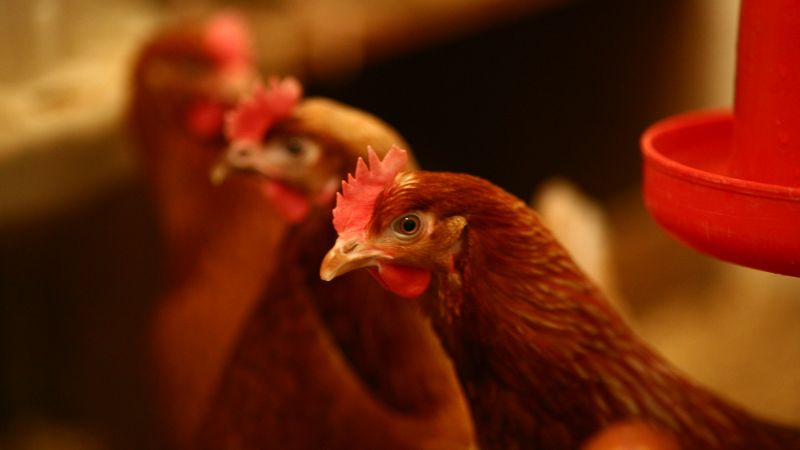 First monkey genetically engineered to have Parkinson’s
First monkey genetically engineered to have Parkinson’s
Hideyuki Okano at the Keio University School of Medicine in Tokyo modified marmosets to have mutated copies of a human gene called SNCA, which is linked to Parkinson’s disease. When this gene is faulty, a protein called alpha-synuclein builds up in the brain, disrupting and then killing the brain cells that make dopamine, a signalling chemical vital for movement.
In the three years since the engineered marmosets were born, they developed Parkinson’s symptoms in the same way people do. This began with signs of sleep disturbance in their first year, followed by the appearance of a-synuclein-associated globules, known as Lewy bodies, in their brain stems the next year. By their third year, the monkeys began to show the characteristic tremors associated with the condition. Okano showed that their tremors could be eased by giving them L-DOPA, a drug given to people with Parkinson’s to make up for the lack of dopamine.
“With these diseases, it’s very difficult to investigate what’s happening in living people, so knowledge of the brain circuits responsible are mostly unidentified,” says Okano. His team hopes to work out the key neural circuits damaged at each stage of the monkeys’ decline. “We hope to find ways to predict the onset of each symptom, and develop drugs to slow down disease progression,” he says.
https://www.newscientist.com/article/mg23030784-200-first-monkey-model-of-parkinsons/
This news was met with a thoughtful editorial in New Scientist: Monkey experiments are a necessary evil for better medicine
"Like it or not, primates are an essential part of biomedical research. But we must ensure the sacrifice is worthwhile, and carefully consider animals' welfare"
https://www.newscientist.com/article/mg23030782-800-monkey-experiments-a-necessary-evil-for-better-medicine/
Microbubbles open brain’s barrier to make chemo more effective
The brain barrier makes it difficult to treat brain tumours and other diseases of the brain because most drugs simply fail to reach their target.
Experiments with mice have shown that the brain barrier can be temporarily disrupted, allowing therapeutic material to enter. The technique was trialled on one human volunteer last year and now will be tried on a larger group.
From New Scientist: "Microbubbles – tiny bubbles of an innocuous gas wrapped in a lipid coating – can be injected into the bloodstream, where they stick around for about 4 minutes. If ultrasound is applied to a specific area of the body or brain within that time, it can cause the bubbles in its path to vibrate. This vibration has been found to temporarily open up the blood-brain barrier in animals and humans.
https://www.newscientist.com/article/2093829-microbubbles-open-brains-barrier-to-make-chemo-more-effective/
Deer prion in moose
"The discovery in Norway of two moose infected with chronic wasting disease suggests that the neurodegenerative disorder might be gaining traction in Europe. The fatal, infectious prion disease is related to bovine spongiform encephalopathy (‘mad cow disease’), and was thought to be limited to deer, elk and moose in North America and South Korea. In April, researchers at the Norwegian Veterinary Institute in Oslo detected it for the first time in Europe in a wild reindeer (Rangifer tarandus tarandus; see Nature http://doi.org/bjz5; 2016). Since May, at least three Norwegian moose (Alces alces, pictured) have tested positive for the disease, which is caused by abnormal proteins. Researchers don’t yet know how the disease spread to Europe, or in which species it originated in Norway."
Kermit Sutra (thanks Independent!)
Something to try at home? The dorsal straddle is a new mating position recently found in the Bombay night frog (Nyctibatrachus humayuni) - adding to the six other frog positions previously recorded.
Willaert et al. (2016), A unique mating strategy without physical contact during fertilization in Bombay Night Frogs (Nyctibatrachus humayuni) with the description of a new form of amplexus and female call. PeerJ 4:e2117; DOI 10.7717/peerj.2117
URL: https://peerj.com/articles/2117
How females store sperm: fertility study in chickens examines fatty acids
The science of breeding chickens has revealed part of the mystery of how certain female animals are able to store sperm long-term. Droplets of fat transferred from female cells to sperm cells may contribute to keeping sperm alive.
Females of some types of insects, reptiles, and birds can store sperm from multiple males within specialized sperm storage areas of their reproductive tracts. Different animals can store sperm for days or years. Stored sperm can fertilize multiple eggs over time, meaning females do not need to mate again to fertilize additional eggs.
Huang A, Isobe N, Obitsu T, Yoshimura Y. Expression of lipases and lipid receptors in sperm storage tubules and possible role of fatty acids in sperm survival in the hen oviduct. Theriogenology. 15 April 2016; 85(7), p 1334–1342. doi: 10.1016/j.theriogenology.2015.12.020
http://www.ncbi.nlm.nih.gov/pubmed/26777559
Lab-grown bones restore pig faces
Researchers have made a significant advance toward replacing large pieces of bone in humans by growing a pig’s own cells into bone in the lab and then using it to restore a piece of missing jaw.
http://www.sciencemag.org/news/2016/06/lab-grown-bones-restore-pig-faces
Last edited: 9 March 2022 12:49



